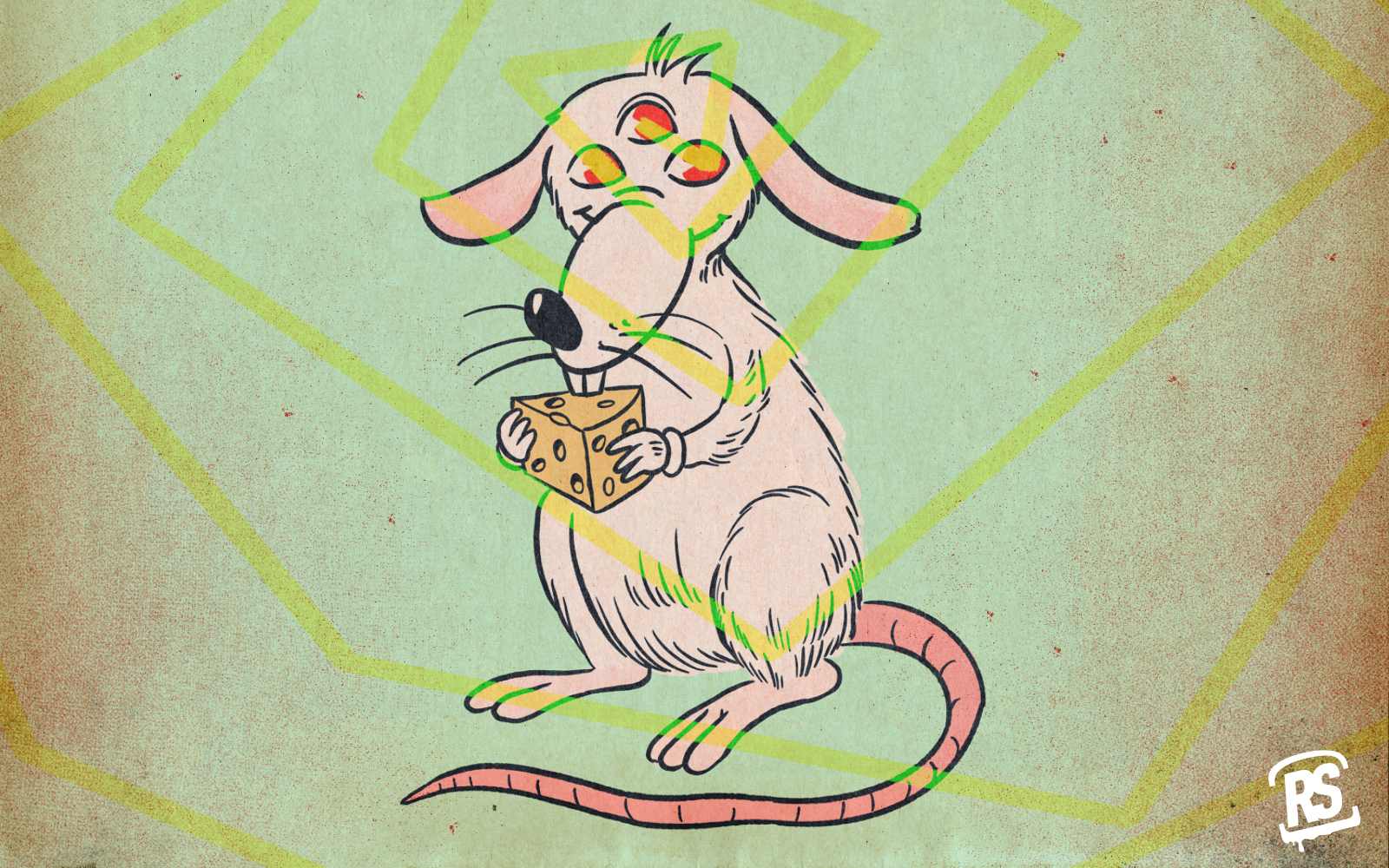Scientists found evidence that rats naturally produce DMT.
Having a natural high has taken a whole new meaning as a study published last summer at Michigan Medicine, at the University of Michigan, revealed the presence of naturally occurring dimethyltryptamine in intelligent rodents.
Dimethyltryptamine is a chemical substance that can occur in plants but also animals. It is commonly known under the shortened name “DMT” and is both a derivative and structural analogue of tryptamine. The substance has hallucinogenic attributes and is therefore often consumed as a psychedelic drug.
DMT has historically been used in rituals and sacred ceremonies. Additionally, it has been proven to have healing effects in psychedelic therapy, such as in Ayahuasca retreats in South America. The substance has also been used as a recreational drug for many years.
The research team at Michigan Medicine is the first to discover the widespread presence of naturally-occurring DMT in the mammalian brain. DMT has been known to be the active ingredient and molecule responsible to generate psychedelic visions. However, this study has shown a groundbreaking result and has proved itself to be a first step toward studying DMT within the brains of humans.
As surprising as it might seem, the research was originally inspired by a documentary on people in a mid-1990s experiment, being interviewed after being under the influence of DMT. In the documentary, the work of the researcher Rick Strassman, Ph.D. with the University of New Mexico School of Medicine, is presented. His experiment consisted of injecting human subjects with DMT and led to his conclusion of the pineal gland as being responsible for making and secreting DMT.
Jimo Borjigin, Ph.D., of the Department of Molecular and Integrative Physiology, focused her research on melatonin production in the pineal gland, prior to her psychedelic studies. She explained in an article published by Science Daily that DMT is not just in plants, but can also be detected in mammals. The scientist revealed that her interest in DMT came about accidentally.
“I said to myself, ‘wait, I’ve worked on the pineal gland for years and have never heard of this,'” Jimo Borjigin, Ph.D. explained for Science Daily. The researcher ended up contacting Strassman, requesting the source of his statement regarding his research on DMT and its relation to the pineal gland. This resulted in a groundbreaking collaboration between the two scientists.
Borjigin’s team’s work has also revealed that the levels of DMT increase in some rats experiencing cardiac arrest. As stated in the Science Daily, a paper published in 2018 by researchers in the U.K. purported that DMT simulates the near-death experience.
The scientist admitted in the article that her team doesn’t know for certain what is, in fact, DMT doing in the brain. “All we’re saying is we discovered the neurons that make this chemical in the brain, and they do so at levels similar to other monoamine neurotransmitters,” Borjigin explained.
Further studies on DMT and its function in mammals’ brain is to be expected.













